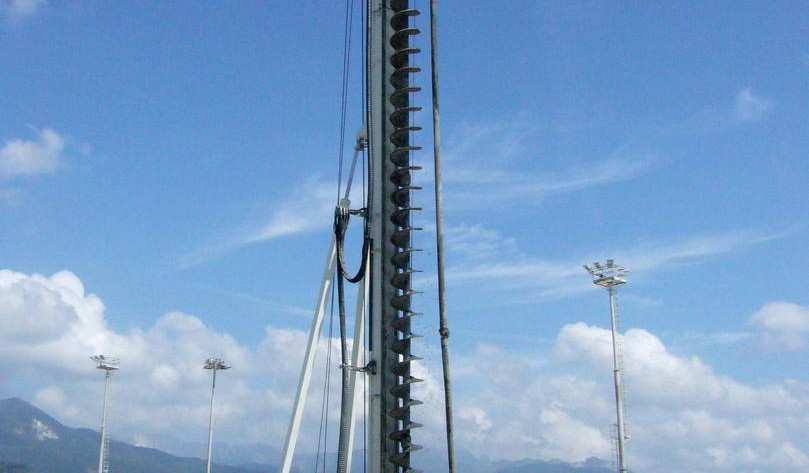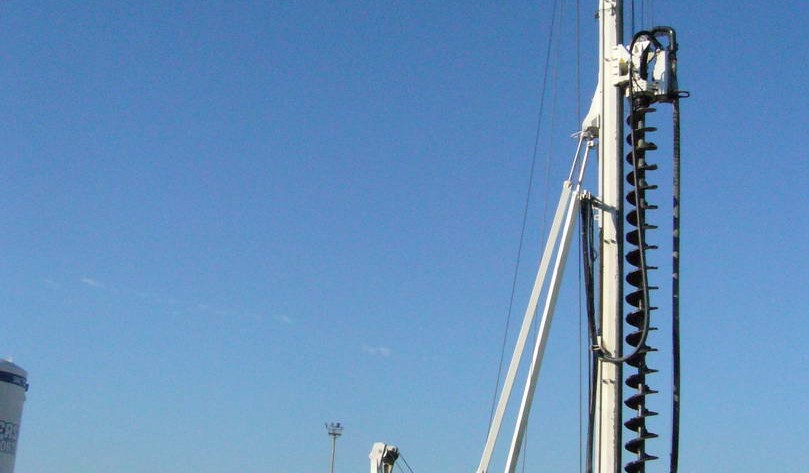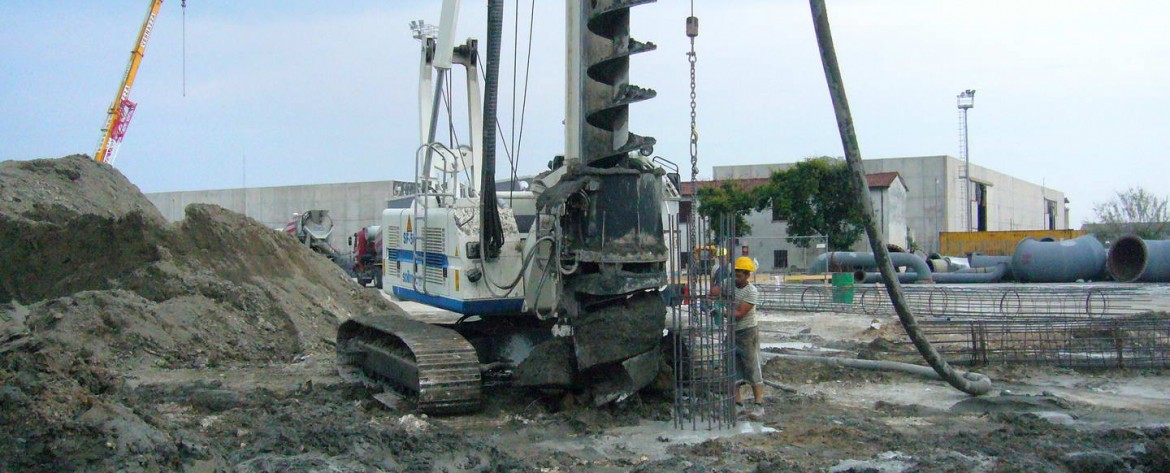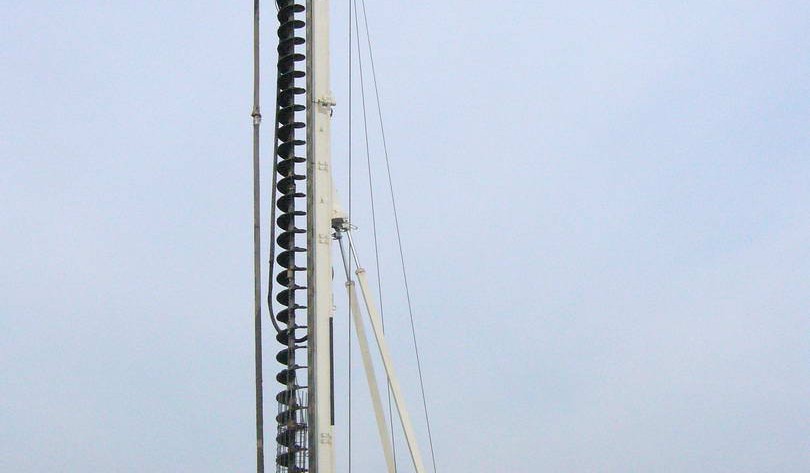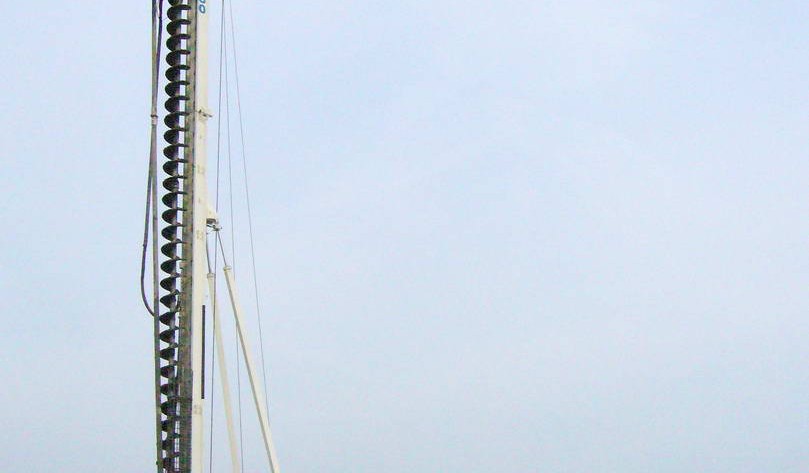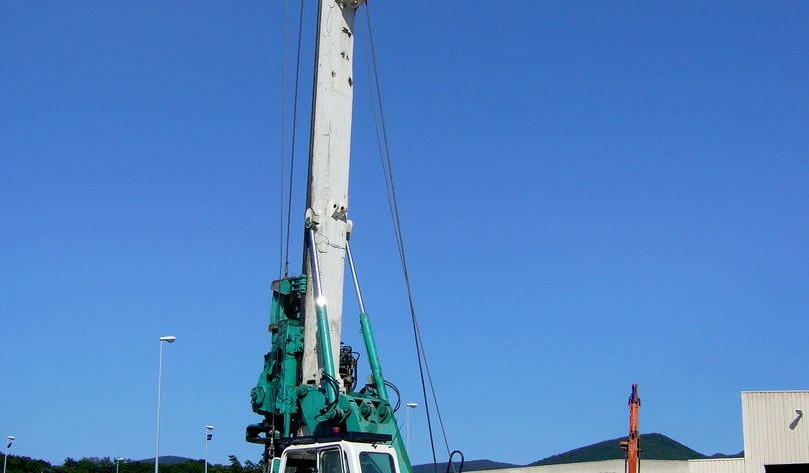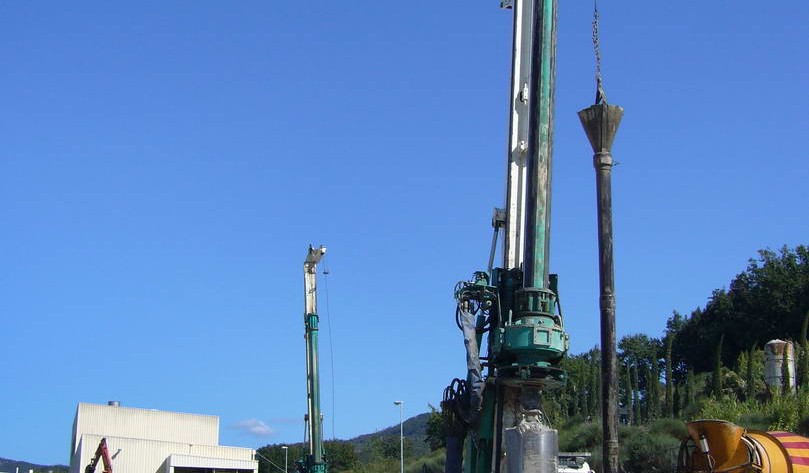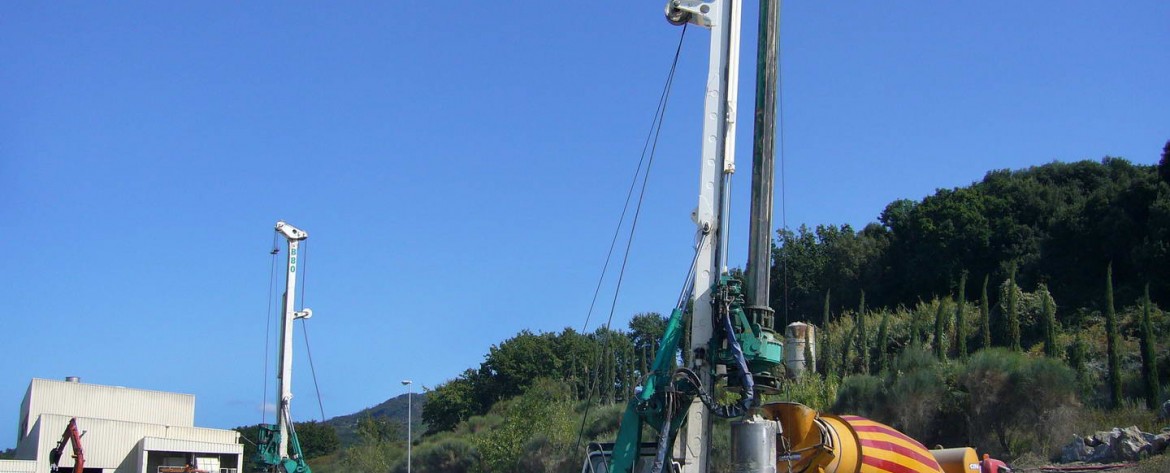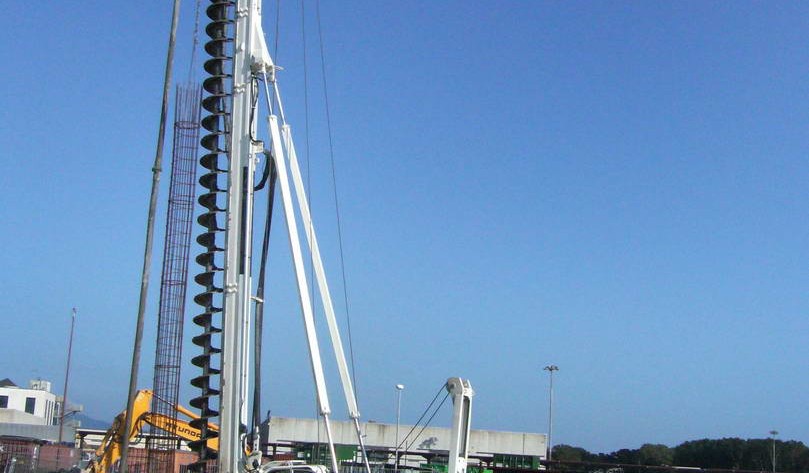Large Diameter Bored Piles
Large diameter bored piles are widely used in civil engineering and have a large range of applications. They are functional both as single elements (monopiles) or in groups as reticulated micropiles and can achieve very high loads (over 500 t). They can be divided into two main types : Bored piles and CFA Continuous Flight Augers.
Large Diameter Bored Piles can be installed by excavating the ground using a tool with a telescopic crane to remove the soil. This process can be carried out with ‘dry’ construction methods, using bentonite and/or biodegradable polymers with temporary reinforced shaft casing to be removed during concrete injection. When excavation work is completed and the required depth achieved, a reinforced steel cage is installed as a single unit or assembled by welding and clamping rebars together, after which the concrete is injected using tremie tubes starting from the bottom of the borehole (Contractor method) to full capacity. Large diameter bored piles can act as containment for groundwork or pier foundations.
Large diameter C.F.A. (Continuous Flight Augers) are largely used in low density soil, with no hard sub-strata and large erratic rock. Their diameters vary from 500 to 1400 mm. with load bearing capacities of between 50 and 250 t. Drilling is carried out using the dry rotary method exclusively without bentonite slurries and/or polymers using a continuously rotating hollow stem auger, with partial displacement of soil equal to 50% of the total diameter of the auger. The displaced soil is collected in the spaces between the auger flights. Having reached the required depth, grout or concrete (Class SCC recommended for its fluidity) is injected through the auger shaft by opening the expendable cap of the digging head maintaining positive concrete pressure as the auger is gradually withdrawn all the way to the surface. With this type of pile open borehole concrete placement is not required, since the concrete itself exerts upward pressure and creates the space to be filled. When pumping is complete, steel reinforcement is installed. This method allows for an increase in daily production, a reduction in material, since it is not contaminated by bentonite or polymers and can be disposed of with a considerable saving in costs.

